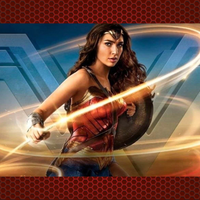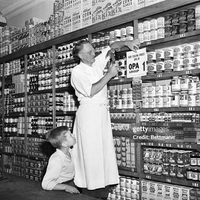
Wonder Woman: The Timeless Feminist Icon and Leader
“It’s about what you believe. And I believe in love. Only love will truly save the world.” – Wonder Woman (2017)
Why Wonder Woman Matters
Wonder Woman may not have walked the Earth like the other women in this project, but her impact is no less real. She was imagined into existence at a time when women needed a new kind of hero—one who didn’t mimic masculinity but redefined power through compassion, justice, and truth. As a myth made modern, she’s become a symbol of what women can be: bold, principled, and unstoppable, even in the face of impossible odds. Her story reminds us that representation isn’t trivial—it shapes what generations of girls believe is possible.
Wonder Woman Theme
A Mythical Icon in a Modern World
Wonder Woman was born in 1941 during a time of global conflict and shifting gender roles. Created by psychologist and suffragist William Moulton Marston, she wasn’t meant to mirror the violent male heroes of the era—she was crafted as a new kind of champion: one who wielded power through compassion, truth, and justice. Inspired by Greek mythology and Amazonian lore, Diana of Themyscira—daughter of Queen Hippolyta—emerged as both warrior and diplomat, a bridge between ancient ideals and modern aspirations.
Her debut in All Star Comics #8 came at the height of World War II, as women were entering the workforce in record numbers and stepping into roles previously denied to them. Wonder Woman reflected this cultural shift. Clad in red, white, and blue, she became a symbol of female agency, boldly challenging the idea that strength belonged only to men. Marston gave her iconic tools—the golden lasso, indestructible bracelets, and a royal tiara—not as weapons of destruction, but as instruments of truth and protection.
Unlike many of her male counterparts, Wonder Woman was never driven by revenge or personal loss. Her mission was always bigger than herself: to create a more just, peaceful world through love, truth, and action.

Lawyer Inez Milholland Boissevain prepares to lead the Suffrage Parade, on March 3, 1913
Wonder Woman’s iconic look wasn’t just imaginative—it was political. Her creator, William Moulton Marston, was a suffragist who drew visual inspiration from the women’s rights movement of the early 20th century. Marston infused Wonder Woman with his own views about women and gender, stating:
“Frankly, Wonder Woman is psychological propaganda for the new type of woman who should, I believe, rule the world.”
The cape, crown, and strength projected by Wonder Woman echo the image of Inez Milholland Boissevain, a lawyer and activist who led the 1913 suffrage parade in Washington, D.C. on horseback, becoming a lasting symbol of female empowerment.
Wonder Woman’s Top 5 Rules to Live By
-
"Only Love Will Save the World."
Compassion is her greatest weapon. Wonder Woman believes love—not hate, power, or fear—is the key to peace and justice. -
"Always Seek the Truth."
Armed with the Lasso of Truth, Diana lives by honesty, transparency, and integrity—truth must be faced, no matter how difficult. -
"Strength Means Protecting Others, Not Dominating Them."
She uses her power to defend the vulnerable, not to assert superiority. Leadership, to her, is rooted in service and responsibility. -
"Peace Is the Goal, But Never at the Cost of Justice."
Diana is a fierce warrior who prefers diplomacy, but she will not stand by in the face of oppression or cruelty. -
"Be Unapologetically Yourself."
Whether facing gods or governments, she never compromises her identity or mission. Her courage includes embracing who she is—warrior, woman, daughter, and hero.
Era Snapshot: The 1940s
Groceries & Prices: A loaf of bread cost 9¢, a dozen eggs were 60¢, and a pound of coffee ran about 30¢.
Slogan of the Times: “We Can Do It!” — the battle cry of working women symbolized by Rosie the Riveter.
Women's Leadership: During WWII, women took on leadership in factories, farms, and even the military, serving in roles such as pilots in the Women Airforce Service Pilots (WASP) and cryptographers like those at Bletchley Park.
Wonder Woman
(1942 1st Series DC) #45
In this vibrant Golden Age issue, Wonder Woman’s origin is revealed through a female reporter’s scoop, leading to adventures with Amazons, a mischievous leprechaun at Holliday College, and a western wedding mystery—all brought to life with classic art and storytelling from the 1940s. The 52-page comic also includes historical features, a holiday PSA, and a touch of gender rivalry in journalism.










